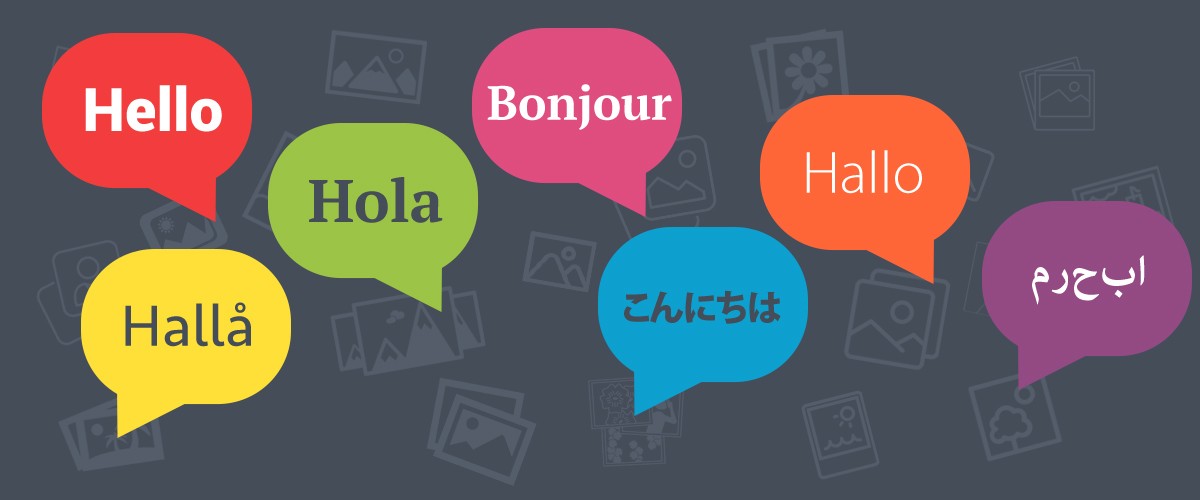Are you considering building a multilingual website or are you thinking about expanding your existing site into additional languages? I don’t blame you! After all, a lot fewer people speak English than we might think. Only 1.5 billion people speak English. That’s about 20% of the world. If we just look at native speakers, in the meantime, it’s only 360 million, which is less than five percent.
And as most of us prefer to listen, read and search in our native language, that means if you only stick with an English website, you’re only going to be able to access a small slice of the world’s population.
But before you embrace a multilingual website you need to weigh up the pros and the cons. So let’s weigh up the big ones.
Con: It’s a lot more work
On the flipside, translating is a big job. Everything that you do suddenly becomes double. And though translating is perhaps not as much work as thinking it all up to begin with, it still means sitting there and going over every text twice if you’re using two languages (And obviously more if you’re going to use even more).
It isn’t just that you need to create every new text twice over, either. Whenever you’re going to edit or change anything on your website, then you’re going to do that change in all the languages that you’re site is in.
Pro: You’ll expand into new markets
Making your content available in another language means that you get to access that other 80% of the pie that all those English websites leave lying. That’s very enticing – particularly as many of these other languages haven’t yet been as saturated by websites as the English speaking world has. It’s a big difference too, with Wikipedia stating that 51% of the internet is English.
That means that if you offer your website in other languages as well, you’re going to find it easier to get the traffic of that language, as the competition is almost by definition less fierce.
Con: You have to speak the additional language
And you can’t just speak it a little bit. You have to speak it well. Otherwise you’re going to find it very difficult to translate your material over. Even if you don’t want to do the translation service yourself – and that’s a real option today, as there are a lot of localization services to help you out – you should still speak the language.
After all, translators might make mistakes (accidentally or otherwise) and if you can’t read what they’re putting up, then you’re going to be in a situation where you look ridiculous for the longest time while being none the wiser.
Pro: You’ll be able to compete for a wider range of keywords
As you probably know, if you want to do well on Google, then you need to rank well for certain keywords. That’s the basis of SEO. The advantage of having a site in multiple languages is that you can try to rank versions of the same page for keywords in different languages.
That can be a huge advantage – particularly as the competition in these other languages will often be far less fierce than it is in English. In that way, you can draw a lot of extra traffic to your site. Even better, it is possible that your success at drawing traffic in one language will actually contribute to you climbing the rankings in English as well.
This is down to the fact that Google most certainly looks at the success of other pages you’ve got to determine if the new page should have a shot. Therefore, the better your pages are doing in one language, the more of a boost they’re going to get elsewhere.
Con: Keywords aren’t direct translations
Of course, that does bring a problem with it and that is that you can’t just translate a search term across from one language to another and hope for the best. People don’t search for the same things in the same ways. They use idiosyncrasies of their language, euphemisms and ways of speaking that mean that if you don’t do your research, you might well not get any traffic from Google for your newly translated page.
And that is obviously not the point.
So, if you want to use a multilingual website, you’ll have to do twice the keyword research and then apply what you’ve learned to the different pages in order to get them to actually draw in traffic. Note that applying these different keyword phrases will also make things more complicated for building up pages, as it means that you can’t just translate directly across and will instead have to doctor each headline and page to fit the keyword strategy you’re trying to apply.
Pro: You’ll be part of the shift
The world’s economic center is shifting. It’s moving away from the west and more towards the east. That means it’s moving away from the English speaking world and towards a range of other languages, including Chinese as well as Spanish as these economies catch up and possibly even surpass the west.
Now, that might make some people uncomfortable, but that doesn’t change that it will happen. That again has to do with the fact that most people don’t speak English and aren’t westerners. And so, as they get a more equal share of the economic pie, the balance will shift in their favor.
By making your website multilingual, you’re preparing for that. You’re making sure that you’re there to catch the spending of these growing economies, so that as the economic center keeps shifting your situation doesn’t worsen.
And sure, you might say, I’ve got time. The thing is, that translating your website across isn’t something you can do one two three. You’ll have growing pains. You’ll have unforeseen problems to overcome. So, wouldn’t it be better to do that gradually? Then, when the east is the place to be, you’ll already be in place.
_____
by Margaret Reid
Source: sitepronews.com


